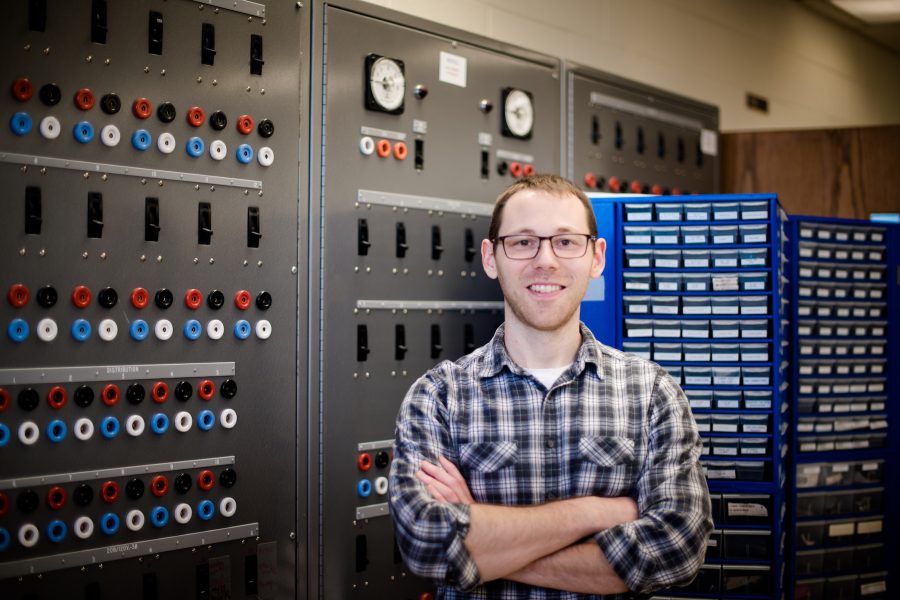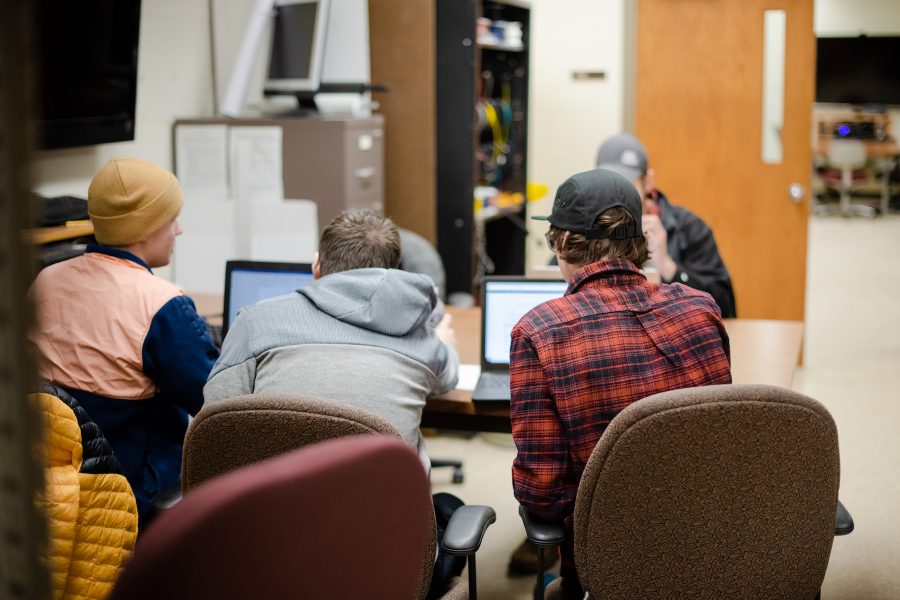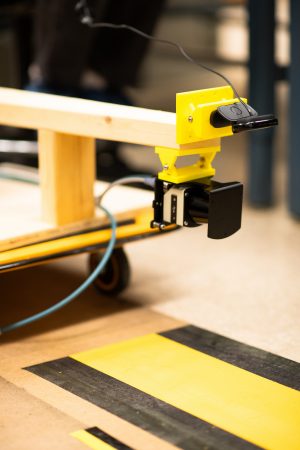
Tony Pinar generously shared his knowledge on Husky Bites, a free, interactive Zoom webinar hosted by Dean Janet Callahan. Here’s the link to watch a recording of his session on YouTube. Get the full scoop, including a listing of all the (60+) sessions at mtu.edu/huskybites.
Can machines learn, for real? Just how intelligent are they? Will machines and robots someday take over the world?
“Machine learning has become a popular tool in the digital world,” says Tony Pinar. “For people outside the field it seems almost magical that a machine could learn.”
Machine-learning algorithms do indeed “learn”, though it probably is not as glamorous as many people think. And not only that, says Pinar, they can be fooled.

A lecturer and researcher in the Department of Electrical and Computer Engineering at Michigan Tech, Pinar demystifies machine learning for students, and shows them how it’s done.
Pinar has even taught his own laptop a thing or two.
“Machine learning is actually a subfield of AI, or artificial intelligence,” says Pinar. “That’s a buzz word for simulating intelligence with a machine.”
Machine learning, he explains, is a collection of algorithms, biologically-inspired neural networks, that allow a computer to learn properties from observations, often with the goal of prediction.
“One pretty common misconception is that AI and machine learning are new. While the field has made leaps in the last few decades, some aspects of machine learning were developed in the 1800s, probably by Gauss,” says Pinar. Carl Friedrich Gauss, the German mathematician, is considered to be one of the greatest mathematicians of all time.
Pinar’s own research interests are in applied machine learning and data fusion. “It is exciting to me to watch the cutting edge move forward, see what sticks and what doesn’t, and observe how the directions of the field evolve,” he says. “It’s also rewarding to work on open-ended and novel problems that are in their infancy and at the cutting edge of today’s technology.”
Pinar is a member of the Institute of Computing and Cybersystems (ICC) at Michigan Tech. ICC provides a platform for innovative research and supports collaboration. The ICC’s 50 members represent 15 academic units at Michigan Tech.
It is exciting to me to watch the cutting edge move forward, see what sticks and what doesn’t, and observe how the directions of the field evolve.
“Often, the strongest solutions to be found are multidisciplinary, where people from many different fields work on the same problem,” notes Pinar.
As senior design coordinator for Michigan Tech’s ECE department, Pinar mentors students working on the final big design project of their senior year. Michigan Tech’s senior design program is more like a first job than a last class, and many projects are sponsored by industry.

One senior design team that Pinar advised this past spring—a multidisciplinary team comprised of students majoring in electrical engineering, mechanical engineering, and computer engineering—competed in the TiM$10K Challenge, a national innovation and design competition. Student teams were invited to participate from 20 different universities by Sick USA. Sick AG, based in Waldkirch, Germany, is a global manufacturer of sensors and sensor solutions.
For the competition, teams were supplied with a 270-foot SICK LiDAR sensor, the TIM, and accessories, and challenged to solve a problem, create a solution or new application.
The Tech team members — Brian Parvin, Kurtis Alessi, Alex Kirchner, David Brushaber and Paul Allen — earned Honorable Mention (fourth place overall) for their project, Evaluating Road Markings (the Road Stripe Evaluator). The innovative product aims to help resolve issues caused by poor road markings.
“Road stripes around the world require frequent maintenance,” Pinar explains. “That’s because fading road stripes cause fatal car accidents and other safety concerns. The team’s software and device can be mounted on police cars in order to cover a wide region. And instead of repainting all road stripes, road crews can become discerning, learning which roads need repainting, and focus only on those, potentially saving a fortune each year on paint and maintenance.”

SICK asked each team in the competition to submit a video and paper for judging upon completion of its project. A panel of judges decided the winning submissions based on creativity and innovation, ability to solve a customer problem, commercial potential, entrepreneurship of the team, and reporting.
While the team’s prototype does not depend on machine learning, the project may continue in upcoming semester. That way, another senior design team will be able to build a machine learning solution into the prototype, notes Pinar.
In April, the team also won an Honorable Mention for the Road Stripe Evaluator project at Michigan Tech’s Design Expo, competing with 50+ other senior design teams.
How did you first get interested in engineering? What sparked your interest?
I was raised near the small town of Trout Creek, Michigan. I’ve always been obsessed with figuring out how things work. I was also interested in electricity from a young age, thanks to my dad, who had me help him to wire houses as an electrician. These led me to pursue electrical engineering at Michigan Tech, where I learned EE was so much more than power distribution.
You earned your BS, MS and PhD at Michigan Tech, all in electrical engineering. What kind of projects did you work on as a student?
I had the opportunity to work on many interesting projects as a student, both applied and research-based. As an undergrad I contributed to projects such as a solar-tracking solar panel, a Tesla coil, and an industry-sponsored project concerning wireless power transfer. In graduate school I worked on projects involving autonomous underwater gliders, 3D metal printers, and explosive hazard detection using ground penetrating radar; my dissertation was focused on the algorithms I developed and used for much of the explosive hazard detection problem.
What do you like most about teaching electrical engineering?
Teaching is like a puzzle where one may have to take a difficult concept, reduce it to digestible pieces, and deliver them to fresh minds in a way to maximize understanding and insight. That challenge is what drives me to be a better teacher. It keeps me on my toes, forces me to constantly identify holes in my knowledge, and drives me to continuously strive to learn new things.
Can you tell us about your life now? Any hobbies?
I live in Hancock with my wife, Noelle, and our two small boys, Malcolm and Dexter. If I’m not spending time outdoors in the Keweenaw with my family, you will probably find me playing guitar or tinkering with a side project.
